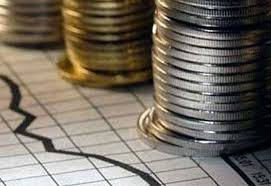According to a data released by the World Bank recently, India’s GDP has crossed the $2-trillion mark in 2014. In 2013, it was a $1.88 trillion economy. While the country took 60 long years to hit the $1 trillion mark, it added the next trillion in just seven years with its current GDP standing at $2.067 trillion.
Further stating that the country’s GDP would cross the milestone of $3 trillion after 5 years, in 2019.
World Bank data also shows that India’s gross national income per person rose to $1,610 (around Rs 1,00,000) a year during 2014 from $1, 560 in 2013. However, data on gross national income per capita- the total value added by all he producers within the country, plus income received from citizens of India working abroad, divided by the population of the countr-shows Bangladesh, Kenya, Myanmar, Tajikistan, Mongolia, Paraguay, Argentina, Hungary, the Seychelles ad Venezuela have shifted their income categories for the better. India continues to be in the ‘lower middle income’ group despite a rise in the gross national income.
India’s emerging out to be a fastest-growing major economy with the growth rate of 7.4 per cent in 2014, along with China which is whopping $10.4 trillion in size. The Indian economy at $2.06 trillion, has almost doubled in size since he financial crisis hit the country in 2008, and has more than quadrupled from the start of the millennium.
Although, the United States still remain the world’s largest economy with a size of $17.42 trillion, followed by China at $10.35 trillionas is said by the report.
India being a developing country can still improve its economy by judiciously deploying the country’s resources to support social programmes focusing on the poor and undertake some structural reforms that invest in people in times of uncertain economic environment. By removing any unnecessary road-blocks for private sector investment can also be of help. The private sector is, by far , the greates source of jobs and can lift hundreds of millions of people out of poverty.
But India has still come a long way and is recovering and would soon cross $3 trillion mark.





26 Comments. Leave new
Privatisation can surely help Indian economy but has its negative impact at the same time. Informative article.
True…Just like every coin has 2 flip sides, so even here privatisation has both its pros and cons. But the answer actually lies in the situation prevailing in the country, whether here privatisation will be of help or not.
And thanks 🙂
Well written…
Thanks 🙂
Well written
Thanks 🙂
Apart from the private sector, the government sector also needs improvement regarding the work being done in the offices and the conditions which are prevalent in these offices.
True bhavya ! I agree !
Very Well Wriiten 😀
Thanks 🙂
Well written
Thanks 🙂
very nice
Thanks 🙂
Thanks
Nice
Thanks 🙂
Nice
Thanks 🙂
Thanks 🙂
Amazing article
Thank you 🙂
Well written article !
Thank you
Very informative ‘)
Yes India is a developing country and we have a wide scope in improving our economy !
Liked it 🙂
Privatisation, drastic reforms, rationalisation of taxation structur e all have contributed in the upliftment of the economy, very well written great article